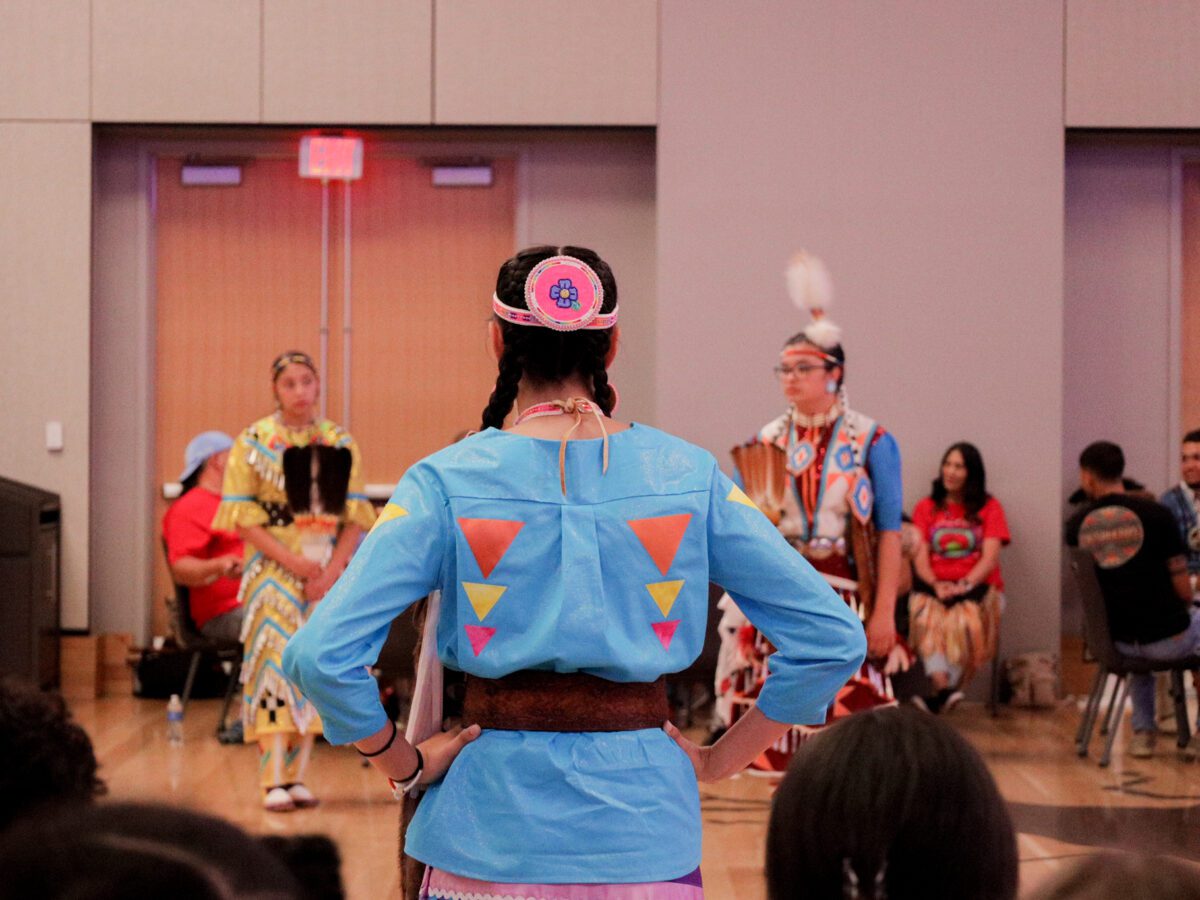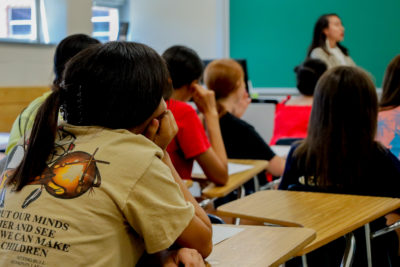
Share this story
|
|
House Bill 166 – the “American Indians Graduating with Honors Act” – has unanimously passed the N.C. House. The bill would allow Indigenous students in the state to wear eagle or hawk feathers at graduation ceremonies.
But that was back in March, and no movement has been made on the bill since then.
Now that the bill crossover deadline in the legislature has passed, advocates are hoping the legislature will take it up again.
According to the North Carolina Office of State Budget and Management, North Carolina has the largest American Indian population east of the Mississippi River. But policies about wearing feathers at graduation ceremonies are inconsistent across the state.
Rep. Jarrod Lowery, R-Robeson, the House’s primary sponsor of the bill, said it’s important that Indigenous students have the ability to wear eagle or hawk feathers.
“I wanted to make sure that any American Indian students who are graduating in North Carolina could not only represent their culture, but respect their heritage and some of their traditions,” Lowery said.
The Native American Rights Fund (NARF), which supports Indigenous students seeking approval to wear feathers and traditional attire to graduation, maintains the cultural significance of wearing feathers at graduation ceremonies.
“Eagle feathers are given in times of great honor. Many tribes present their people with eagle feathers upon graduation to signify the achievement of this important educational journey and the honor the graduate brings to his or her family, community, and tribal nation,” a resource from NARF states.
Over the years, the issue has been raised in school districts across the state, with each individual district regulating the issue. Lowery said in researching the topic, he’s found that allowing or not allowing students to wear cultural attire at graduation ceremonies has been inconsistently implemented.
“Something that we have noticed over the past few years is that we’ve had American Indian students throughout southeastern North Carolina who graduated high school and wanted to wear a feather to graduation and they’ve been denied,” Lowery said. “And not only that, it’s really been inconsistently denied.”
Lowery shared the instance of a district only allowing one student to wear culturally significant items, while other districts’ decisions vary year to year. To Lowery, the legislation is straightforward.
“It’s a simple cultural expression,” Lowery said.
Reactions from educators
Rodney Jackson, the Indian education coordinator at Cumberland County Schools, has hosted an eagle feather ceremony for Indigenous students in the district for the past few years. He said it’s a way to make receiving the feather special for students, even though Cumberland County Schools’ policy doesn’t allow students to wear them at graduation ceremonies.
Jackson, a member of the Lumbee tribe, said the legislation would help resolve this issue.
In addition to being culturally significant, Jackson said knowing they’ll earn an eagle or hawk feather at graduation can incentivize some students to continue their education.
“Graduating high school is a huge milestone among Indian people, considering that we have the highest dropout rate in the nation,” Jackson said. “I think it can only help students work towards their high school diploma.”
According to the latest report from the State Advisory Council on Indian Education (SACIE), the dropout rate among American Indian students, at 3.46%, is greater than their white, Black, and Latinx peers. The dropout rate for American Indian students remains higher than the state average, which is 2.39%.
Stephen Bell, the American Indian education coordinator at Guilford County Schools, said this legislation passing would allow students to be seen, particularly in districts where they don’t see American Indian representation or if their districts don’t participate in a Title VI Indian Education program.
“I think about how it can be helpful for all of our kids, even if they’re the only native kid in their school district or in their school,” Bell said. “I’m really excited to see this movement on this bill.”
According to Bell, Guilford County Schools has allowed Indigneous students in the district to wear feathers at graduation since around 2018. So, while efforts to wear eagle and hawk feathers in his district isn’t typically an issue, Bell often hears from parents and educators in other districts who ask him for guidance on approaching the issue in their districts.
Bell said this legislation will be a positive for all Indigneous students in the state and will potentially open the door for more Indigenous students to stay connected with their heritage.
“This is sometimes kids’ only opportunity to be with other native students or native community,” Bell said. “When we talk about how culture is healing, this connects to graduation rates, to the dropout rates, and academics.”
What’s next?
The bill is headed to the Senate next, where it would need to pass and ultimately make it to the governor’s desk. Sen. Danny Britt Jr., R- Hoke, has filed a companion bill in the Senate — SB 139.
Behind the Story
The terms American Indian, Native American, and Indigenous are used interchangeably in this article. According to the National Museum of the American Indian, all of these terms are acceptable, but the general agreement is to refer to Native people by their specific tribal name. Native peoples often have individual preferences on how they would like to be addressed. A best practice is to use the language that members of the community use to describe themselves.




